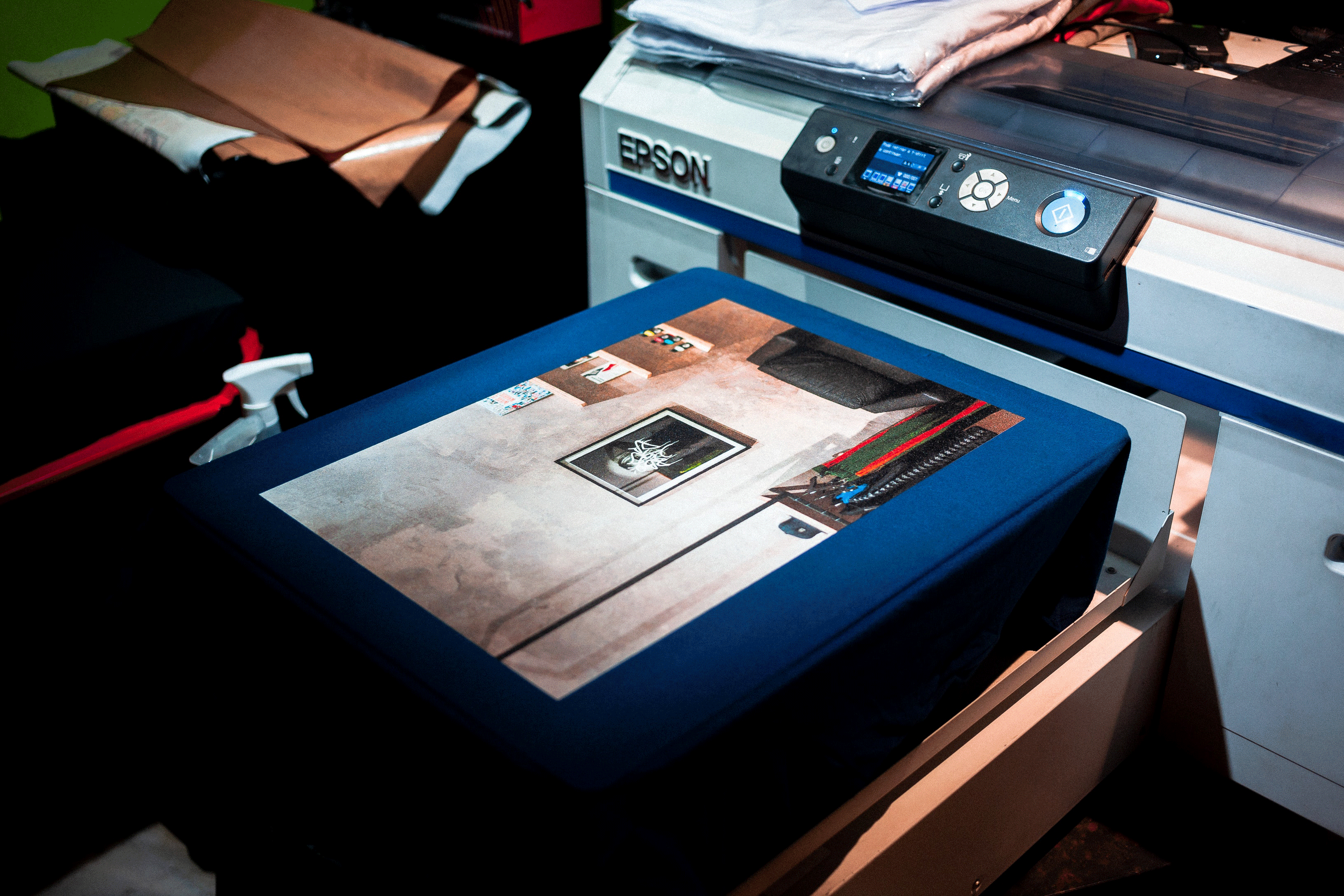Your shopping cart is empty!

Direct-to-Garment (DTG) printing has revolutionized the textile and apparel industry, allowing for greater creativity, flexibility, and efficiency in garment decoration. The history of DTG printing can be traced back to the early developments in digital printing technology, which laid the foundation for this innovative method.
Digital printing emerged in the late 20th century as a result of advancements in computer technology, inkjet printing, and digital imaging. In the 1980s and early 1990s, inkjet printers became increasingly popular for personal and professional use, enabling users to print high-quality images and documents directly from their computers.
During this time, researchers and engineers began exploring the potential applications of inkjet technology for printing on substrates other than paper, such as textiles. This exploration led to the development of specialized inks and print heads, capable of handling the unique challenges of printing on fabric.
The first DTG printer, known as the "Revolution," was introduced in 1996 by DIS of Bradenton, Florida. This machine was a modified version of an Epson Stylus Pro printer, adapted to print directly onto garments. Although the Revolution had its limitations, it demonstrated the potential of digital garment printing and paved the way for further innovation.
Over the next decade, several companies, including Kornit, Brother, and Mimaki, entered the market with their own DTG printers. These machines featured improved print heads, ink formulations, and software, enabling faster and more accurate printing on a wider range of fabrics.
As DTG printing gained popularity, it became apparent that dtg pretreatment was crucial for achieving high-quality prints, particularly on dark-colored garments. The development of specialized pretreatment solutions helped improve ink absorption, adhesion, and durability, resulting in better print quality and longevity.
Simultaneously, advancements in ink technology played a significant role in the evolution of DTG printing. Water-based pigment inks were developed to replace the earlier dye-based inks, offering greater color vibrancy, washability, and compatibility with a wider range of fabrics.
Today, DTG printing has become a widely accepted method for garment decoration, used by businesses of all sizes, from small custom apparel shops to large-scale manufacturers. The technology has continued to evolve, with modern DTG printers offering improved speed, precision, and reliability compared to their early predecessors.
In addition, the rise of e-commerce websites like Need T-shirts Now and other print-on-demand services has further fueled the growth of DTG printing, enabling entrepreneurs and artists to create and sell custom apparel without the need for large upfront investments or inventory management.
In conclusion, the history of DTG printing is a testament to the power of innovation and technology in transforming industries. From its humble beginnings as a modified inkjet printer to its current status as a dominant force in the textile and apparel market, DTG printing has come a long way and will likely continue to shape the future of garment decoration.
Find out more about the Best DTG Printers and comment below
Leave a Comment